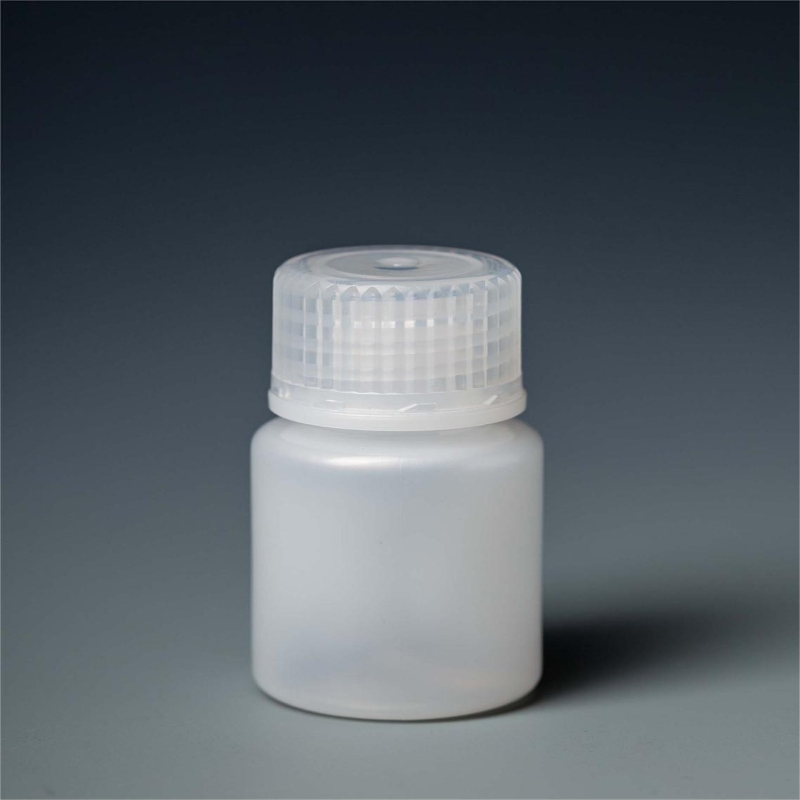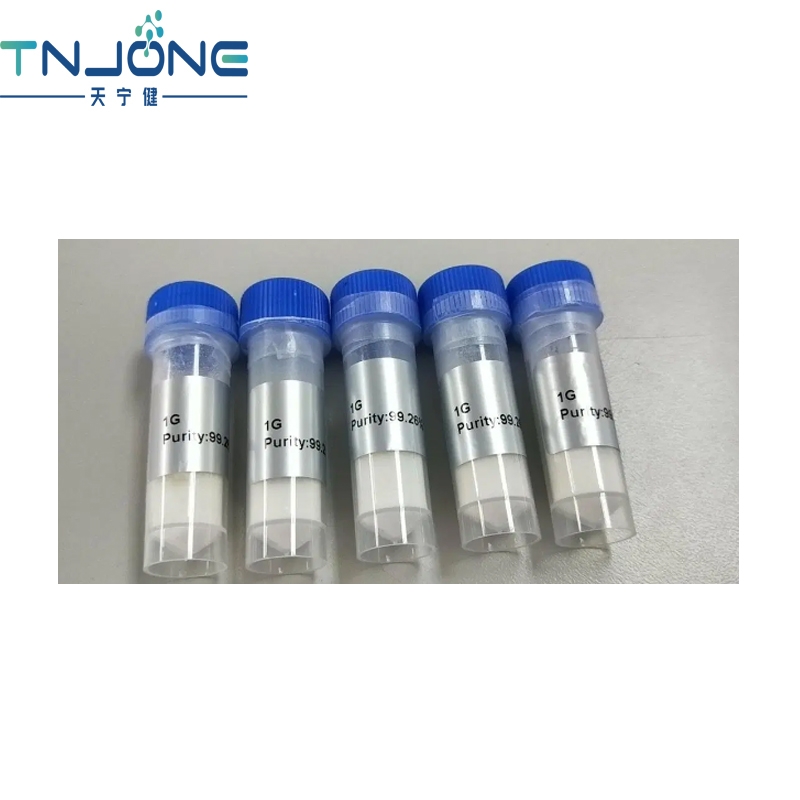-
Categories
-
Pharmaceutical Intermediates
-
Active Pharmaceutical Ingredients
-
Food Additives
- Industrial Coatings
- Agrochemicals
- Dyes and Pigments
- Surfactant
- Flavors and Fragrances
- Chemical Reagents
- Catalyst and Auxiliary
- Natural Products
- Inorganic Chemistry
-
Organic Chemistry
-
Biochemical Engineering
- Analytical Chemistry
-
Cosmetic Ingredient
- Water Treatment Chemical
-
Pharmaceutical Intermediates
Promotion
ECHEMI Mall
Wholesale
Weekly Price
Exhibition
News
-
Trade Service
Editor | Rheumatoid arthritis (RA) is a common autoimmune arthritis, which is characterized by the loss of early immune tolerance to citrullinated protein, which eventually leads to joint inflammation and destruction [1]
.
Tumor necrosis factor (TNF) is the key inflammatory cytokine of RA, and T cells in the synovium are the main TNF producers [2]
.
November 22, 2021, from the Mayo Medical Center/Stanford University Cornelia Weyand group (the first author is Dr.
Wu Bowen) published an article Mitochondrial aspartate regulates TNF biogenesis and autoimmune tissue inflammation in Nature Immunology, reporting dysfunction The aspartate shuttle defect caused by mitochondria drives the expansion of the endoplasmic reticulum (ER) of T cells and the oversynthesis of TNF in patients with rheumatoid arthritis
.
More and more evidences show that abnormal immune cell metabolism in autoimmune diseases can promote the cellular and molecular processes of inflammation
.
In the T cells of RA patients, glucose metabolism shifts from the classic glycolysis to the pentose phosphate pathway, which is supported by the production of nicotinamide adenine dinucleotide phosphate (NADPH), pentose and 5'-ribose phosphate Cell anabolism and proliferation
.
At the same time, the mitochondrial function defect caused by the loss of AMP kinase (AMPK) activation redirects T cell metabolism from fatty acid oxidation to fatty acid synthesis to promote cytokine production and tissue infiltration
.
In addition to being a metabolic center, mitochondria can also regulate gene expression through a wide range of signal pathways such as calcium and reactive oxygen species
.
Interestingly, as reported in this study, mitochondria can also influence immune cell response phenotypes through other mechanisms
.
The researchers first determined the depolarization and dysfunction of T cell mitochondria in patients with RA, and this mitochondrial phenotype is related to the expansion of ER
.
ER is a membrane structure coupled with ribosomes and is responsible for the translation of complex transmembrane proteins
.
The content of ER in T cells of RA patients is significantly higher than that of normal controls, and inhibition of mitochondrial activity can simulate pathological ER expansion
.
The size of ER in T cells is directly related to TNF synthesis and secretion.
Patient-derived T cells significantly up-regulate the production of TNF, and inhibition of ER expansion can significantly improve this characteristic
.
In terms of mechanism, due to changes in oxidative metabolism, the abundance of aspartic acid (an amino acid derived from oxaloacetate, an intermediate of the tricarboxylic acid cycle) in the mitochondria of T cells derived from RA patients decreases
.
Aspartic acid usually shuttles from the mitochondria to the cytoplasm, where it is converted back to oxaloacetate and participates in the regeneration of cytoplasmic nicotinamide adenine dinucleotide (NAD+)
.
Defective aspartic acid shuttling leads to a decrease in NAD+ levels and reduces NAD+-dependent protein ADP-ribosylation
.
In the absence of ADP ribosylation, the ER chaperone BiP can release endoplasmic reticulum stress proteins (such as IREα), thereby driving the expansion of the endoplasmic reticulum and transforming T cells into TNF super-producers (Figure 1)
.
Interestingly, treatment of RA T cells with exogenous NAD+ and aspartic acid prevents ER expansion
.
Figure 1: Mitochondrial Aspartate regulates BiP ADP-ribosylation to control endoplasmic reticulum amplification and TNF synthesis
.
Finally, the study also demonstrated that transfection of healthy mitochondria into T cells from RA patients can inhibit ER expansion and prevent TNF synthesis
.
To explore the transformative value of the study, the authors used immunocompromised NSG mice, which lack B cells, T cells, and NK cells
.
They transplanted human synovial tissue into these mice, and then injected peripheral blood mononuclear cells from RA patients to induce synovial infiltration and mimic the human RA disease state
.
When mice were treated with aspartic acid, synovial T cell infiltration was greatly reduced, and several pro-inflammatory cytokines were produced, including but not limited to TNF
.
The most significant finding of this study is the coupling between mitochondrial function and ER biogenesis and T cell production of TNF
.
Current biological treatments for patients with RA and many other autoimmune diseases mainly use antibodies against inflammatory cytokines or their receptors
.
The latest small molecule inhibitors can inhibit inflammatory cytokine signaling by inhibiting Janus kinase (JAK)
.
All these strategies are aimed at preventing downstream events in the long-term inflammatory process
.
However, cytokines and their downstream signaling pathways have a wide range of effects on a variety of cells outside immune cells.
This fact is related to the adverse events of existing treatments, such as vascular embolism in patients treated with JAK inhibitors
.
This study suggests that intervention in the upstream biochemical and metabolic events of the inflammatory process may have clinical application potential, and the function of mitochondria in immune cells and its regulation of other organelles have considerable research value
.
Original link: https:// Platemaker: 11 References 1.
McInnes, IB & Schett, GN Engl.
J.
Med.
365, 2205-2219 ( 2011).
2.
Zhang, F.
et al.
Nat.
Immunol.
20, 928–942 (2019) 3.
Wu, B.
et al.
Nat.
Immunol.
https://doi.
org/10.
1038/s41590- 021-01065-2 (2021).
Reprinting instructions [Non-original articles] The copyright of this article belongs to the author of the article.
Personal forwarding and sharing are welcome.
Reprinting is prohibited without permission.
The author has all legal rights, and offenders must be investigated
.
.
Tumor necrosis factor (TNF) is the key inflammatory cytokine of RA, and T cells in the synovium are the main TNF producers [2]
.
November 22, 2021, from the Mayo Medical Center/Stanford University Cornelia Weyand group (the first author is Dr.
Wu Bowen) published an article Mitochondrial aspartate regulates TNF biogenesis and autoimmune tissue inflammation in Nature Immunology, reporting dysfunction The aspartate shuttle defect caused by mitochondria drives the expansion of the endoplasmic reticulum (ER) of T cells and the oversynthesis of TNF in patients with rheumatoid arthritis
.
More and more evidences show that abnormal immune cell metabolism in autoimmune diseases can promote the cellular and molecular processes of inflammation
.
In the T cells of RA patients, glucose metabolism shifts from the classic glycolysis to the pentose phosphate pathway, which is supported by the production of nicotinamide adenine dinucleotide phosphate (NADPH), pentose and 5'-ribose phosphate Cell anabolism and proliferation
.
At the same time, the mitochondrial function defect caused by the loss of AMP kinase (AMPK) activation redirects T cell metabolism from fatty acid oxidation to fatty acid synthesis to promote cytokine production and tissue infiltration
.
In addition to being a metabolic center, mitochondria can also regulate gene expression through a wide range of signal pathways such as calcium and reactive oxygen species
.
Interestingly, as reported in this study, mitochondria can also influence immune cell response phenotypes through other mechanisms
.
The researchers first determined the depolarization and dysfunction of T cell mitochondria in patients with RA, and this mitochondrial phenotype is related to the expansion of ER
.
ER is a membrane structure coupled with ribosomes and is responsible for the translation of complex transmembrane proteins
.
The content of ER in T cells of RA patients is significantly higher than that of normal controls, and inhibition of mitochondrial activity can simulate pathological ER expansion
.
The size of ER in T cells is directly related to TNF synthesis and secretion.
Patient-derived T cells significantly up-regulate the production of TNF, and inhibition of ER expansion can significantly improve this characteristic
.
In terms of mechanism, due to changes in oxidative metabolism, the abundance of aspartic acid (an amino acid derived from oxaloacetate, an intermediate of the tricarboxylic acid cycle) in the mitochondria of T cells derived from RA patients decreases
.
Aspartic acid usually shuttles from the mitochondria to the cytoplasm, where it is converted back to oxaloacetate and participates in the regeneration of cytoplasmic nicotinamide adenine dinucleotide (NAD+)
.
Defective aspartic acid shuttling leads to a decrease in NAD+ levels and reduces NAD+-dependent protein ADP-ribosylation
.
In the absence of ADP ribosylation, the ER chaperone BiP can release endoplasmic reticulum stress proteins (such as IREα), thereby driving the expansion of the endoplasmic reticulum and transforming T cells into TNF super-producers (Figure 1)
.
Interestingly, treatment of RA T cells with exogenous NAD+ and aspartic acid prevents ER expansion
.
Figure 1: Mitochondrial Aspartate regulates BiP ADP-ribosylation to control endoplasmic reticulum amplification and TNF synthesis
.
Finally, the study also demonstrated that transfection of healthy mitochondria into T cells from RA patients can inhibit ER expansion and prevent TNF synthesis
.
To explore the transformative value of the study, the authors used immunocompromised NSG mice, which lack B cells, T cells, and NK cells
.
They transplanted human synovial tissue into these mice, and then injected peripheral blood mononuclear cells from RA patients to induce synovial infiltration and mimic the human RA disease state
.
When mice were treated with aspartic acid, synovial T cell infiltration was greatly reduced, and several pro-inflammatory cytokines were produced, including but not limited to TNF
.
The most significant finding of this study is the coupling between mitochondrial function and ER biogenesis and T cell production of TNF
.
Current biological treatments for patients with RA and many other autoimmune diseases mainly use antibodies against inflammatory cytokines or their receptors
.
The latest small molecule inhibitors can inhibit inflammatory cytokine signaling by inhibiting Janus kinase (JAK)
.
All these strategies are aimed at preventing downstream events in the long-term inflammatory process
.
However, cytokines and their downstream signaling pathways have a wide range of effects on a variety of cells outside immune cells.
This fact is related to the adverse events of existing treatments, such as vascular embolism in patients treated with JAK inhibitors
.
This study suggests that intervention in the upstream biochemical and metabolic events of the inflammatory process may have clinical application potential, and the function of mitochondria in immune cells and its regulation of other organelles have considerable research value
.
Original link: https:// Platemaker: 11 References 1.
McInnes, IB & Schett, GN Engl.
J.
Med.
365, 2205-2219 ( 2011).
2.
Zhang, F.
et al.
Nat.
Immunol.
20, 928–942 (2019) 3.
Wu, B.
et al.
Nat.
Immunol.
https://doi.
org/10.
1038/s41590- 021-01065-2 (2021).
Reprinting instructions [Non-original articles] The copyright of this article belongs to the author of the article.
Personal forwarding and sharing are welcome.
Reprinting is prohibited without permission.
The author has all legal rights, and offenders must be investigated
.







